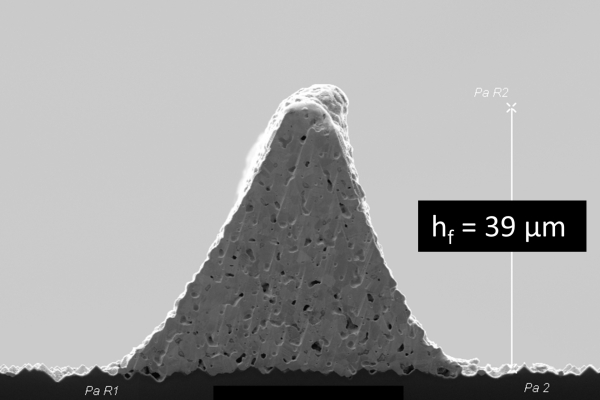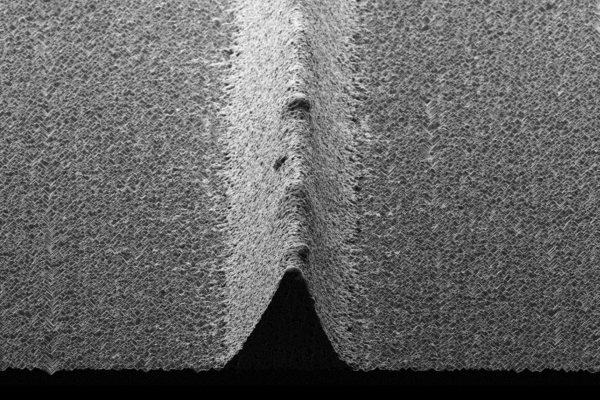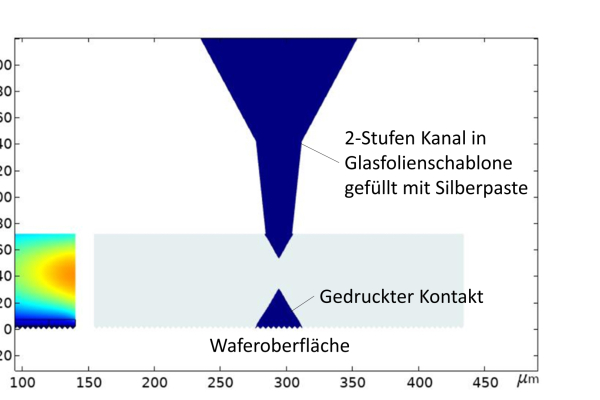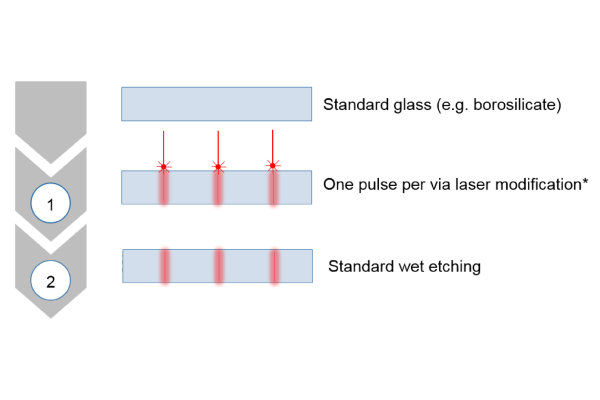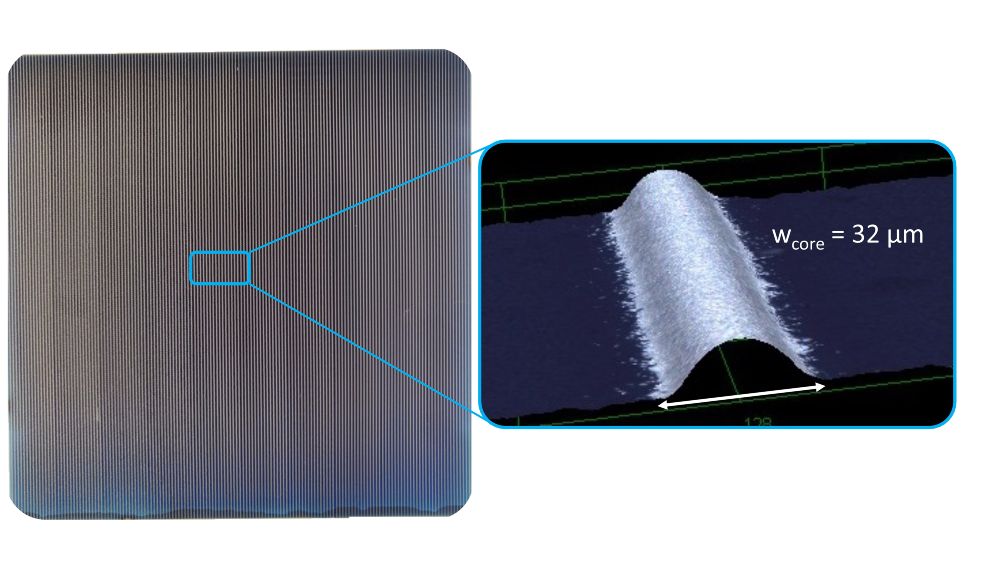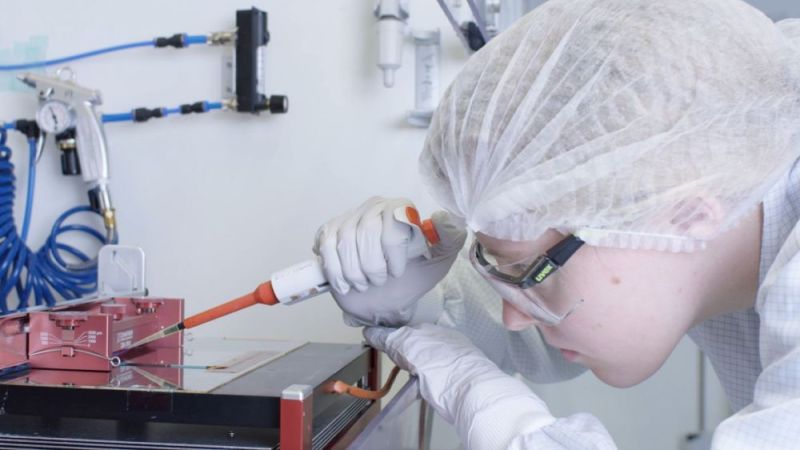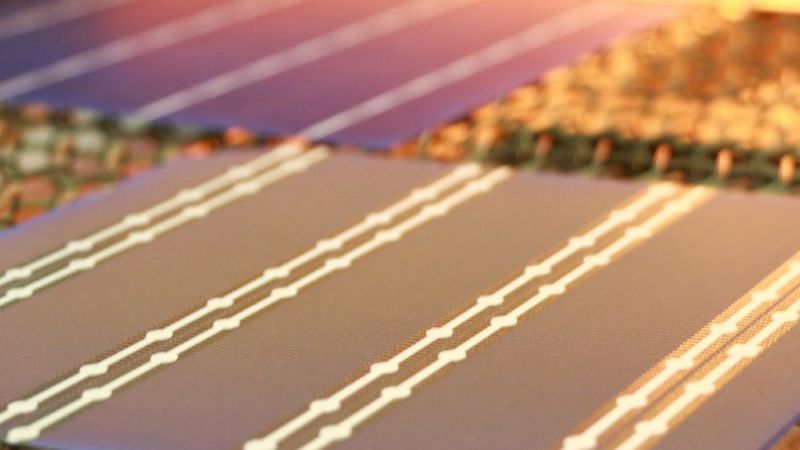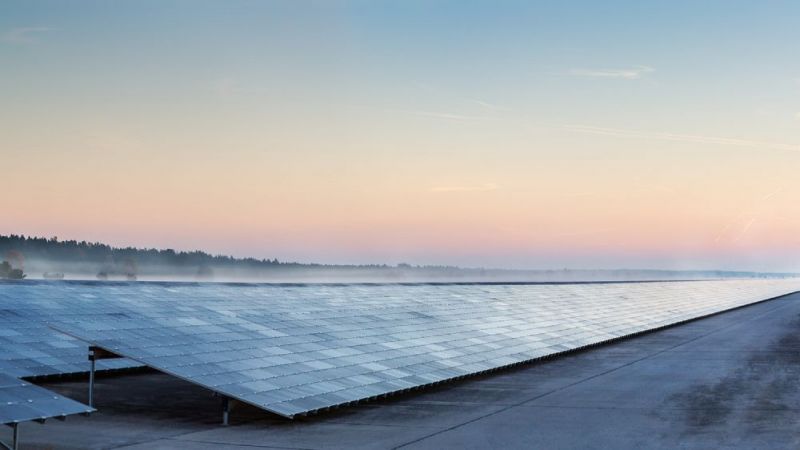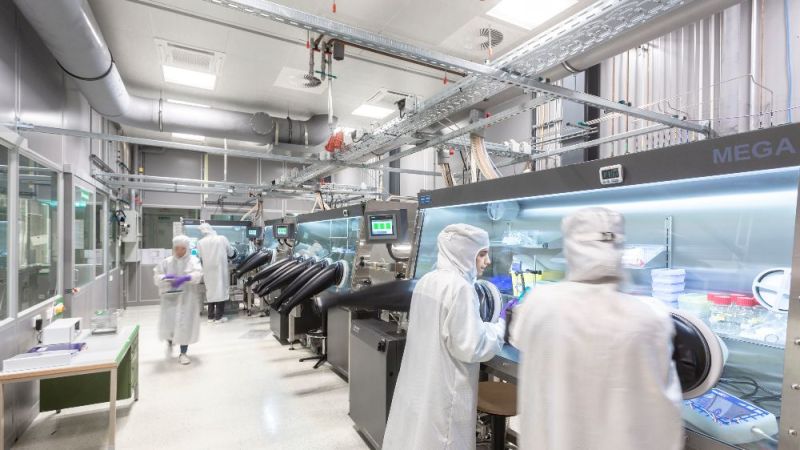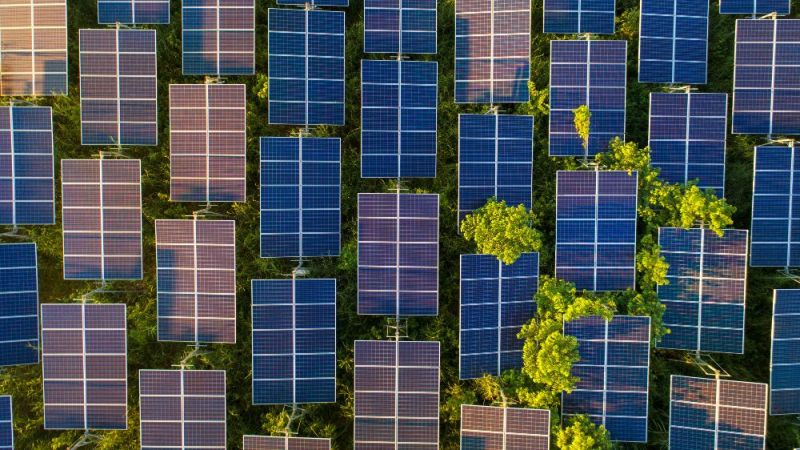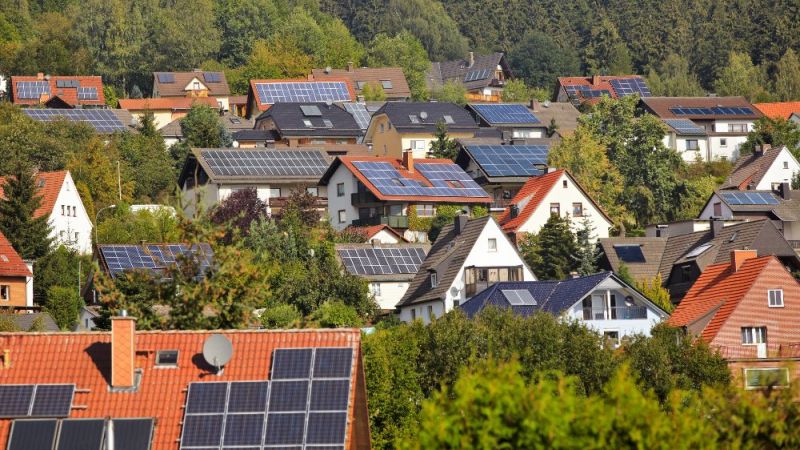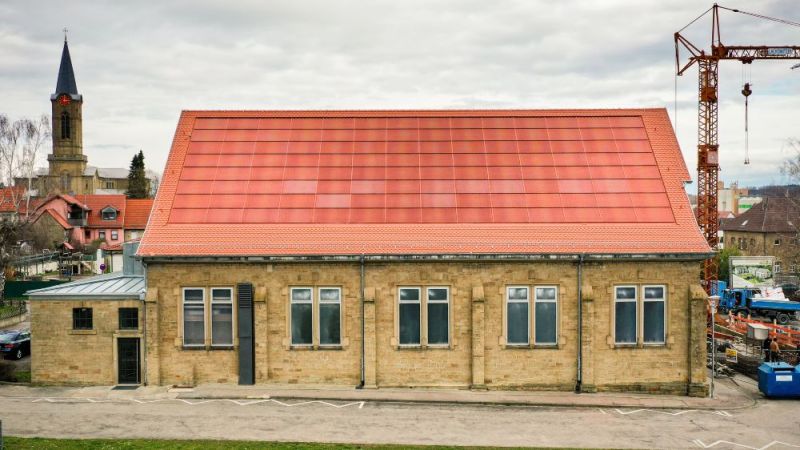Photovoltaics
New printing technologies for efficient silicon solar cells
The focus of today's research on silicon solar cells aims to further develop individual technological processes or to explore new methods. Using new printing stencils and innovative printing processes, the INNOMET project team has succeeded in printing fine-line contacts with a triangular cross-section on crystalline solar cells. The results offer promising approaches for the next generation of efficient and cost-effective solar cells.
At a glance
- In the future, glass foils can be used as a cost-effective alternative for the stainless steel foils usually used in printing stencils to print contacts on silicon solar cells.
- With the LIDE process, thin glass (thickness 100 to 500 micrometres) is modified by laser radiation and then wet-chemically etched to obtain the desired microstructures such as trenches and holes in glass foils.
- With the new stencils made of structured glass foil, the science teams succeeded in printing contacts with a triangular cross-section on crystalline solar cells. This is ideal geometry for significantly reducing or avoiding reflection losses.
- Glass foils structured with the LIDE process have also shown promising results in the multi-nozzle dispensing process.
Creating narrow contacts with structured glass foils
On the front side of silicon solar cells, there is a well-conducting and fine contact grid, which should shade as little active cell area as possible. Narrow interruption-free contacts require fewer valuable resources - especially silver, lead to lower resistance losses and ultimately to lower production costs.
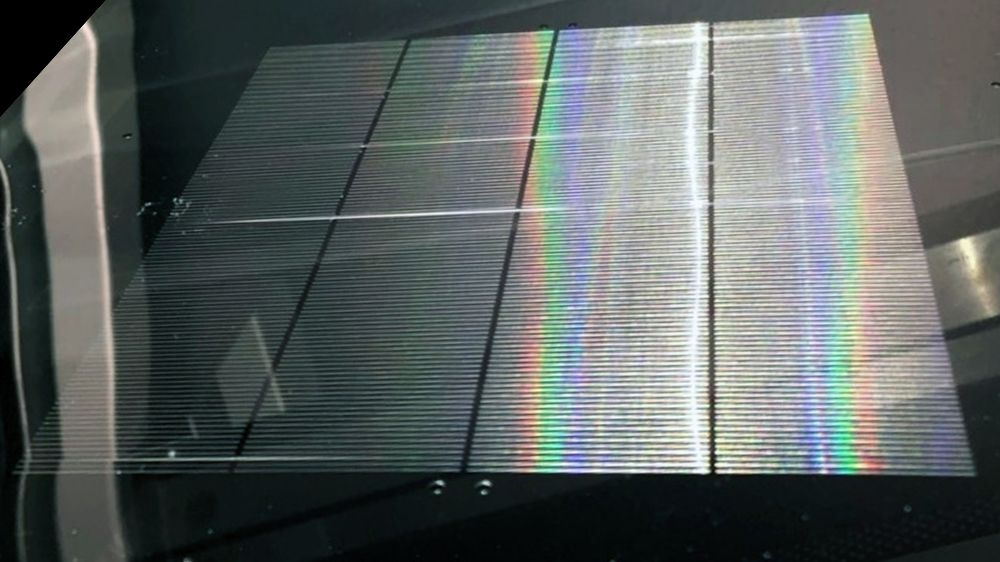
The INNOMET project was carried out by the project partners LPKF Laser & Electronic (LPKF), Christian Koenen with his company for high-tech stencils, and the Fraunhofer Institute for Solar Energy Systems ISE in association. INNOMET focuses on innovative processes to produce stencil printing moulds for very fine front contacts. The new stencils should be applicable in currently used production lines of silicon solar cells. The project partners plan to produce contacts with a width of less than 20 micrometres that have sufficient height to conduct the charge carriers to the cell connectors without relevant resistance losses. Width, height and cross-sectional area may only vary slightly.
The targeted solutions are based on thin glass foils that are structured using a process developed by LPKF called laser-induced deep etching (LIDE). The glass foil serves as a cost-effective alternative for the stainless steel foils usually used in printing stencils. A particular challenge was to reduce the thickness of the glass foil in order to make it usable for stencil printing. In addition, the science teams investigated the so-called parallel nozzle dispensing process. This is a contactless printing technology that works with nozzles. That is where structured glass foils replace the usual nozzles made of steel.
Laser-induced deep etching creates microstructures in very thin glass
With this process, thin glass (thickness 100 to 500 micrometres) is modified by means of laser radiation and then wet-chemically etched. Only during the etching step do the desired microstructures such as trenches and holes appear. This method prevents micro-cracks or other defects and allows glass to be used as a material for technical applications. The necessary stability of the glass is maintained. In order to adapt the microstructures of the stencils and nozzles as flexibly as possible to the specifications, several laser modifications and different etching media must be combined. In this way, holes and cuts with very precisely adjustable geometries can be created.
Printing stencils with structured glass foils allow ideal geometry of the contacts
Based on extensive simulations of the printing process, the science teams have achieved a particularly sophisticated geometry of the contacts in the form of a triangular cross-section. This geometry is particularly advantageous with regard to the reflection behaviour of the contacts in the finished module, as the contacts are "optically invisible" in the best case. This increases the active area of the solar cells and the efficiency can be increased. Up to now, it seemed very difficult to implement such a geometry by printing.
The interaction of the printing paste with the surfaces of the solar cell and the stencil was a particular challenge for the scientific team. Extensive simulations of the paste transfer process in the printing channel served to identify the optimal channel geometry for the glass foils. In cross-section, these consist of two areas: On the side facing away from the solar cell, the channel is strongly conically open and forms a reservoir for the printing paste. On the side facing the solar cell, the channel has edges that are as steep as possible. When the paste is pressed through the stencil, only a small amount hits the surface of the solar cell due to the narrow exit of the channel. As soon as the stencil is separated from the solar cell, the paste preferably tears off where it does not touch the stencil. This forms the triangular cross-section of the contacts. An ideal geometry to effectively reduce or even avoid reflection losses. In this way, "transparent contacts" could actually become possible in the future.
Printing nozzles instead of screen printing save resources
In addition to stencil printing, the scientists investigated the multi-nozzle dispensing process developed in the GECKO project. In the future, this technology could be integrated into industrial production lines for silicon solar cells and replace the screen printing that is currently predominantly used.
In the dispensing technology, the printing paste is transferred to the surface of the solar cell in a contactless printing process. This is done with a special print head and a nozzle rail that has many small parallel openings. The printing is similar to toothpaste that is pressed through the tube opening – with the exception that here the researchers use many parallel nozzles with very fine openings that are smaller than 50 micrometres. The process, which is now being further developed and marketed by Highline Technology (a spin-off of Fraunhofer ISE), offers several advantages: It has a beneficial effect on the geometry of the contacts, the reduced silver consumption and the higher production throughput. In the future, the use of glass-foil nozzle bars can offer a cost-effective and efficient alternative to the nozzle bars used so far.
Multi-nozzle dispensing printing with textured glass foils show good results
Here, it is important that the paste detaches completely from the nozzle opening. With very small nozzles, the paste can stick to the edge and gradually clog the nozzle. Using the LIDE process, the scientists have succeeded in creating precise nozzle rails with narrow openings. The structured glass foils have shown promising results in the multi-nozzle dispensing process and are to be further optimised in the future.
Further optimising high-efficiency solar cells is the goal of research
The scientific teams have succeeded in developing two promising approaches for fine-line metallisation of future high-efficiency solar cells. Using a screen printer at Fraunhofer ISE, they successfully tested the new stencils with structured glass foil and printed triangular contacts on Cz-Si-PERC (Czochralski Silicon Passivated Emitter and Rear Cell) solar cells. Further work is needed in order to enable an easy-to-use and stable process for printing with glass-foil stencils. For this purpose, a team of scientists is conducting research within the Mod30plus project.
LPKF is using the project results to offer glass stencils and glass nozzles for various printing technologies, such as sputtering and inkjet printing. In future, printing forms and nozzle rails based on structured glass foils could be advantageous for these processes.
www.christian-koenen.de


